Introduction
The art of pickling vegetables is a timeless preservation technique that has been practiced across various cultures for centuries. It not only extends the shelf life of perishable produce but also enhances its flavor, creating a tangy, savory delight that can be enjoyed throughout the year. Among the myriad of vegetables that lend themselves well to pickling, fresh greens—such as cabbage, cucumbers, kale, mustard greens, and spinach—stand out for their versatility and nutritional value. This guide delves into the intricacies of how to pickle fresh greens, from selecting the right ingredients to mastering the pickling process, ensuring that your homemade pickles are not only delicious but also safe to consume.
Chapter 1: Understanding the Basics of Pickling

1 What is Pickling?
Pickling is a preservation method that involves submerging food in a brine or vinegar solution, often containing spices, herbs, and sugar, to create an acidic environment that inhibits the growth of harmful bacteria. This process not only preserves the food but also adds layers of flavor, transforming simple vegetables into tangy, crunchy treats.
2 Types of Pickling
There are several methods of pickling, each yielding different textures and flavors:
-
Fermented Pickling: Utilizes natural bacteria present on the vegetables to create lactic acid, resulting in probiotic-rich pickles. This method requires careful temperature control and monitoring to prevent the growth of unwanted bacteria.
-
Refrigerated Pickling: Involves using a vinegar-based brine that doesn’t require fermentation. These pickles are typically ready to eat within a few days and must be stored in the refrigerator.
-
Quick Pickling: Similar to refrigerated pickling but often uses a higher vinegar concentration for immediate eating. Quick pickles retain their bright colors and crisp texture.
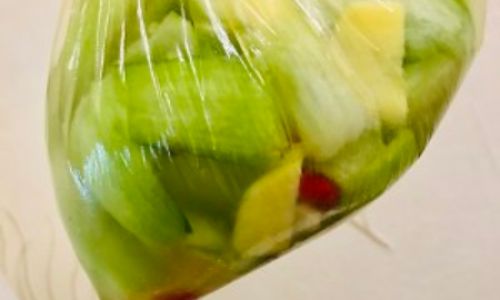
3 Importance of Acidity
The acidity level of the pickling brine is crucial for safety. A pH level below 4.6 is generally considered safe, as it inhibits the growth of most harmful bacteria. Vinegar, with its high acetic acid content, is a staple in many pickling recipes.
Chapter 2: Selecting and Preparing Fresh Greens
1 Choosing the Right Vegetables
When selecting fresh greens for pickling, look for vegetables that are firm, vibrant in color, and free from blemishes or soft spots. Here are some popular choices:
- Cabbage: Ideal for making sauerkraut or kimchi.
- Cucumbers: Perfect for traditional pickles.
- Kale: Adds a nutritious twist to pickled greens.
- Mustard Greens: Known for their spicy, tangy flavor.
- Spinach: Tender and versatile, suitable for quick pickling.
2 Preparation Techniques
-
Cleaning: Thoroughly wash vegetables under running water. For leafy greens, consider soaking them in a vinegar-water solution to remove dirt and bacteria.
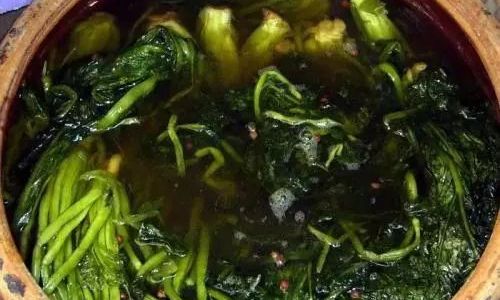
-
Chopping: Depending on the vegetable, slice or chop into uniform pieces to ensure even pickling. Cabbage, for instance, is often shredded, while cucumbers are sliced lengthwise or into chips.
-
Blanching (Optional): For some vegetables, blanching—briefly boiling in water followed by an ice-water bath—can help retain color and texture. However, this step is not necessary for all pickling recipes.
Chapter 3: Crafting the Perfect Pickling Brine
1 Ingredients for a Basic Brine
- Vinegar: Apple cider vinegar, white vinegar, or rice vinegar are common choices. The type of vinegar will influence the final flavor.
- Water: Balances the acidity of the vinegar.
- Salt: Enhances flavor and draws out moisture from the vegetables, aiding in preservation.
- Sugar or Honey (Optional): Adds sweetness to balance the acidity.
- Spices and Herbs: Customize your brine with garlic, onions, dill, mustard seeds, bay leaves, and other aromatic ingredients.
2 Making the Brine
- Combine Ingredients: In a large pot, mix vinegar, water, salt, and sugar (if using) until the salt and sugar are fully dissolved.
- Simmering (Optional): For a more infused flavor, gently simmer the brine with spices and herbs for about 10 minutes. Let it cool slightly before using.
- Adjusting Acidity: If you’re unsure about the acidity, you can use a pH test strip to ensure the brine is below 4.6.
Chapter 4: The Pickling Process
1 Packing the Jars
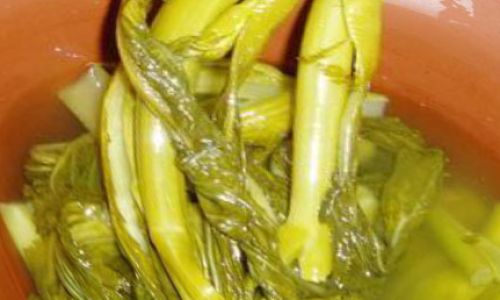
- Sterilizing Jars: Ensure your jars and lids are clean and sterile by boiling them in water for 10 minutes or running them through the dishwasher’s hot cycle.
- Packing Vegetables: Pack the prepared vegetables tightly into the jars, leaving about half an inch of headspace at the top. This helps prevent the pickles from floating and ensures the brine covers all the vegetables.
2 Pouring the Brine
- Ladle the Brine: Carefully pour the cooled brine over the vegetables, ensuring they are fully submerged. Use a chopstick or a small spoon to release any air bubbles and press down the vegetables if necessary.
- Sealing the Jars: Wipe the rim of the jars clean and secure with lids.
3 Processing Methods
-
Refrigerated Pickles: For quick and refrigerated pickles, simply store the sealed jars in the refrigerator for at least 24 hours before eating. They will continue to develop flavor over time.
-
Water Bath Canning (for Long-Term Storage): For fermented or longer-term storage, process the jars in a boiling water bath. Submerge the jars in a large pot of boiling water, ensuring they are fully covered by at least 1 inch of water. Process for the recommended time based on your recipe and jar size (typically 10-15 minutes for pints and quarts). Remove the jars using a jar lifter and let them cool completely before opening.
Chapter 5: Troubleshooting and Tips for Success
1 Common Issues and Solutions
- Soft Pickles: This can happen due to improper blanching, over-processing, or not enough vinegar. Ensure you follow the recipe closely and use the correct vinegar concentration.
- Cloudy Brine: Cloudiness is often caused by natural yeasts and bacteria. It’s generally harmless but can be prevented by using distilled vinegar and ensuring all equipment is sterile.
- Off Flavors: This can result from using old vinegar, improper storage, or contamination. Always use fresh ingredients and store pickles properly.
2 Tips for Better Pickles
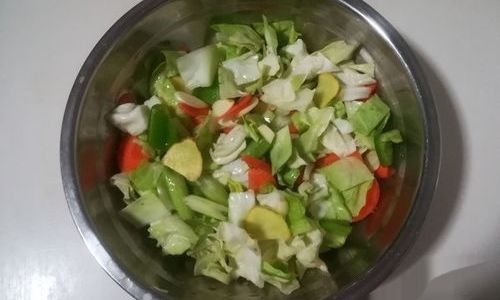
- Use Fresh Ingredients: The quality of your pickles starts with fresh, high-quality vegetables.
- Experiment with Flavors: Don’t be afraid to customize your brine with different spices and herbs to suit your taste.
- Label and Date: Clearly label your jars with the date and contents to keep track of when they were made and their contents.
- Storage: Store pickles in a cool, dark place if not refrigerating immediately. Once opened, always refrigerate.
Chapter 6: Special Techniques and Variations
1 Fermented Pickles
Fermented pickles, like sauerkraut and kimchi, rely on natural bacteria to create lactic acid. This process not only preserves the vegetables but also adds beneficial probiotics. To ferment:
- Pack Vegetables: Tightly pack shredded or chopped vegetables into a clean, non-reactive crock or jar.
- Add a Starter Culture (Optional): Use a starter culture like whey or a commercial fermentation starter to ensure a successful fermentation.
- Weight Down: Use a weight, such as a fermentation weight or a clean stone, to keep the vegetables submerged in their own juices.
- Cover: Cover the crock or jar with a cloth or loose-fitting lid to allow gases to escape.
- Ferment: Place in a cool, dark place and ferment for 3-10 days, depending on taste preference and temperature. Check daily to ensure the vegetables remain submerged and taste periodically.
- Store: Once fermented to your liking, transfer to clean jars, cover with brine if necessary, and store in the refrigerator.
2 Quick Pickles
Quick pickles are a faster, vinegar-based alternative to fermented pickles. They are ready to eat within a few hours to a day and don’t require special equipment or monitoring. To make quick pickles:
- Prepare Vegetables: Slice or chop vegetables as desired.
- Brine: Prepare a vinegar-based brine with a higher vinegar concentration for immediate acidity.
- Pack and Pour: Pack vegetables into jars and pour hot brine over them.
- Cool and Eat: Let the jars cool to room temperature, then refrigerate for at least an hour before eating. They will continue to develop flavor over the next
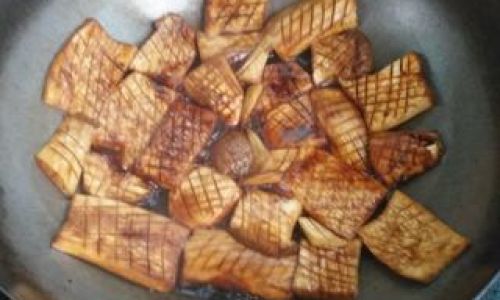
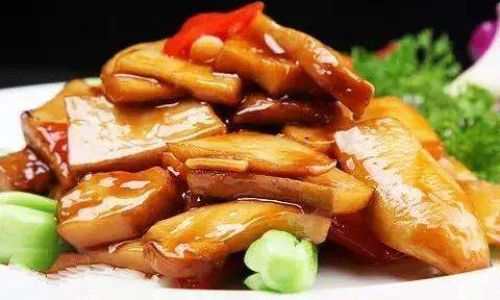
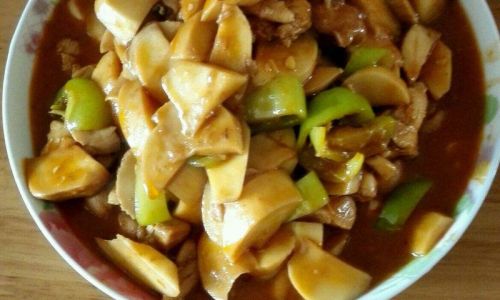

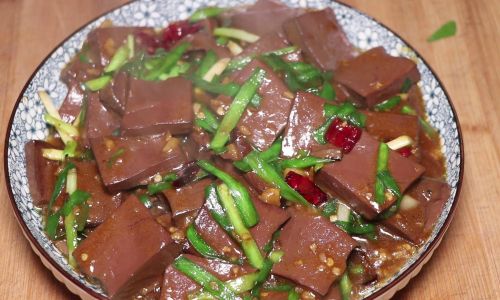

0 comments